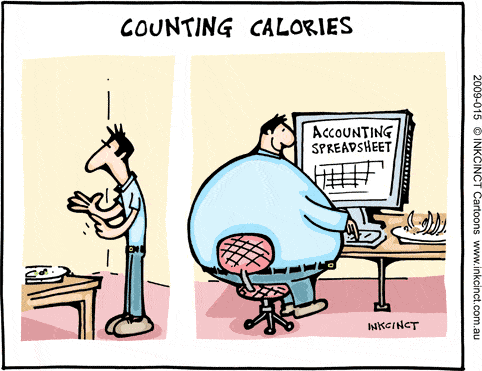Whether we’re trying to lose weight or just want to eat healthy, most of us use counting calories as a way to judge whether we’re eating the right amount of food. (The prevailing goal of 2,000 calories a day came from the FDA starting in the 1990s; it’s the basis of all nutritional information printed on food packaging.) But is that the only way we should measure our food intake? Are all calories equal?
Gabriel Enescu, a physical therapist and wellness consultant at Excel Physical Therapy, says absolutely not! He compares your digestive system to the gas tank in your car, something that can only hold so much at one time. But the difference between the gas in your tank and the food in your belly is that you can’t see a measurement of how full your tank is, and it’s difficult to measure how much you’re consuming. (Yes, we know that we’re eating an apple, but how many calories is that?) In addition, he says, different foods fill up the tank differently, so equal amounts of different foods don’t necessarily fill us up the same way. Because of the variety of ways our bodies differ, including blood sugar, hormone levels, and activity levels, Gabriel advocates paying attention to how foods make us feel after eating them. “If you dip in energy after a meal or snack, or if you are hungry an hour later,” she says, “that isn’t a great food for you.” He suggests tracking your responses to foods with protein, carbohydrates, high fats, low sugar, etc., and you should see a trend in how you respond. Once you’ve compared a variety of foods, he says, you should be able to create a daily or weekly plan, where your meals keep you satisfied for at least 3 hours and your food digests well, without causing gas, bloating, or heartburn. In addition, Gabriel notes, avoid sugary processed foods during this process. “Highly processed foods don’t make anyone feel ‘good,’ so you won’t be able to test accurately,” she says.
When trying to select the best foods for your body, Gabriel suggests following these guidelines:
Look at ingredient labels. When reading through the list of ingredients, remember that they are listed from the most prominent to the least, so be sure to avoid anything that has sugar as one of the first three or four words, even if it’s cane sugar. Eating large quantities of sugar can cause inflammation, heart disease, diabetes, and more. The maximum you should eat at a given meal or snack is 20 grams. (To keep things in perspective, a banana has 17 grams of sugar, while a grande pumpkin spice latte has 50.)
Be aware of little extras like dyes, usually listed as “red dye no. 40” or “yellow no. 5.” While they are usually used in small quantities (and therefore are listed at the end of your food’s label), why slow down your body’s filter just for the sake of colorful food?
Avoid trans fats, which do a double whammy to your body, raising your LDL (“bad”) cholesterol and lowering your HDL (“good”) cholesterol. This combination can increase your risk of both heart disease and stroke.
Skip the diet soda. While diet soda may have fewer calories, it’s better for your body to stick to club soda and fresh lemon if you want that crisp bubbly feeling without the artificial sweeteners and additives.
Don’t assume that low-sodium is necessary. Gabriel points out that some of us need more sodium than others, so she recommends listening to how your body reacts to a variety of salt levels. Stick to whole foods and pay attention to your blood pressure, and especially look for cramping during exercise, which can be caused by an imbalance in electrolytes, including sodium.
The best way to improve your diet? Make a grocery list of healthy foods and stick to your list (so don’t go to the store hungry). Gabriel says that regardless of your body and metabolism, your body will always benefit when you choose natural foods like fruits and vegetables over processed ones.



